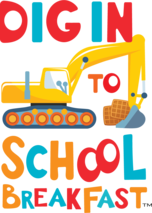|
Breakfast After the Bell (BAB) is required in high-need schools per House Bill 1508: The Washington Kids Ready to Learn Act. High-need schools are defined as any public school where at least 70% of students are eligible for free or reduced-price meals; or, if operating the Community Eligibility Provision (CEP), the school has a free claiming percentage of 70% or more.
All Local Education Agencies (LEAs) required to implement BAB in SY23-24 must submit a BAB Implementation Plan by May 10, 2023. Implementation plans must include the planned meal service models and point-of-service meal counting systems.
OSPI offers exemptions to BAB requirements for:
- Schools with free and reduced-price Breakfast participation that is at least 70% of their free and reduced-price Lunch participation based off October 2022 data
- Alternative schools where implementing BAB would create an undue hardship
Exemption requests for SY 23-24 must be submitted by May 10, 2023.
Join us for a Webinar!
The Breakfast After the Bell webinar will review the requirements, BAB implementation plans, reminders, and next steps.
Register for the Breakfast After the Bell webinar
Date: Wednesday, April 19
Time: 1-2 pm PT
Resources
Questions? Please contact your Program Specialist.
Does your district offer summer school or other activities during the summer? If so, it’s time to start thinking about summer meals!
Who must provide summer meals?
Public School Districts offering summer programs of academic, enrichment, or remedial services at schools where 50% or more students are eligible for free or reduced-price lunch. (RCW 28A.235.160)
Exemptions are provided by OSPI on a case-by-case basis and must be approved in advance.
Who else can provide summer meals?
School districts can operate the Seamless Summer Option (SSO) or Summer Food Service Program (SFSP) at any school or site where 50% or more of the children living in the area qualify for free or reduced-price lunch. This can be determined using school data or census data. Summer school sites must be open to all children, ages 0-18. Participation in meal service cannot be limited to summer school students.
Districts offering summer school at sites that do not qualify for SSO or SFSP or offering meals only to students enrolled in summer school may operate the NSLP/SBP. Under NSLP/SBP, a by-name meal count is required and meals must be claimed according to a student’s approved eligibility status. CEP or Provision 2 schools may continue to offer meals at no cost to enrolled summer school students. However, the CEP state copay does not apply to summer meals. Meals will be reimbursed according the CEP or Provision 2 federal claiming percentages.
Want to learn more about the summer meal programs?
Questions? Please contact your School Meals Program Specialist.
The COVID-19 public health emergency will expire on May 22, 2023. SP 03-2023, CACFP 02-2023: Offsite Monitoring of the Child and Adult Care Food Program and School Meal Programs After the Public Health Emergency Ends provides guidance related to operations of Child Nutrition programs after the COVID-19 public health emergency ends.
This guidance announces the end of offsite monitoring for the Child and Adult Care Food Program (CACFP) and the School Meal Programs after the COVID-19 public health emergency ends.
The Washington State Farm to School Network is planning a gathering to regroup and revitalize Farm to Child Nutrition efforts in Washington State. The event will be held in Central, Washington.
Please complete this brief survey to share topics you are interested in.
New to the Washington Farm to School Network? The network focuses on active participation to connect members and grow farm to child nutrition participation and success in Washington state. Join the network to get updates on all things Farm to Child Nutrition.
U.S. Department of Agriculture’s annual adjustments to the Income Eligibility Guidelines have been announced for the Child Nutrition Programs.
These guidelines are to be used in determining eligibility for free and reduced-price meals and free milk from July 1, 2023 through June 30, 2024. These guidelines are used by schools, institutions, and facilities participating in the National School Lunch Program, School Breakfast Program, Special Milk Program for Children, Child and Adult Care Food Program, and Summer Food Service Program
Download a copy of the SY 2023-24 Income Guidelines
The Proposed Rule Child Nutrition Programs: Revision to Meal Patterns Consistent With the 2020 Dietary Guidelines for Americans has been published in the Federal Register.
Based on the latest nutrition science and feedback from school meal partners across the nation, USDA’s Food and Nutrition Service is proposing updates to the school nutrition standards. The proposed updates reflect the goals of the most recent Dietary Guidelines, as required by law, and build in time for planning and implementation to ensure the school meals community and the children they serve are set up for success.
Comments on the Proposed Rule can be submitted through the Federal eRulemaking Portal through April 10, 2023. Section 16 of the proposed rule provides a summary of the rule and a list of specific questions for which USDA is seeking public comments. For more information on submitting comments, please see Tips for Submitting Effective Comments.
Resources:
 |
|
NSLP Equipment Assistance Grant (From Package 472) closes March 27!
Public school districts, private schools, tribal schools, charter schools and residential childcare institutions are eligible to apply for the National School Lunch Program (NSLP) Equipment Assistance Grant.
|
Focus areas for this year's grant are the purchase or repair of equipment that supports:
- scratch cooking
- storing fresh food from local producers
- receiving food deliveries in a more efficient manner
- serving healthier meals
- improving food safety
- improving working conditions for school nutrition staff
- providing more convenience or appeal to students
- establishing, maintaining, or expanding the School Breakfast Program
Interested in Applying?
View the recorded webinar for an overview of the application, important changes from previous year's applications, tips for your application, and grant timelines.
View the NSLP Equipment Assistance Grant Interest Webinar Recording
How to Apply
Applicants may apply for a single school or multiple schools, including central kitchens. Applications are completed in iGrants (form package 472) and are due before 4 pm PT, Monday, March 27, 2023.
Questions? Please email the CNS Grants team.
For information and next steps on the White House Conference on Hunger, Nutrition, and Health, please review the following:
Post-Conference Updates
You are invited to join the Biden-Harris administration for their first post-Conference monthly update.
Register for the White House Conference on Hunger, Nutrition, and Health Monthly Update session
Date: Wednesday, March 22
Time: 12:30 - 1:00 pm PT
Want to feature local products in your meals but don’t know where to start? You don’t have to make the whole meal local to make your efforts count. Starting small by featuring one item a month can go a long way to incorporating Farm to School programming.
To support integrating local foods into your meals, OSPI CNS is excited to feature a new Harvest of the Month section in our newsletter. Each month we will highlight one local food that will be in season the following month. The highlight will include recipe ideas, nutrition education resources, and procurement tips.

Radish
Radishes grow well in all parts of Washington. They are typically available locally from April – November, however because they prefer cooler climates, they may be less abundant from July – September. Warmer weather could make for a spicier radish but can also make the radish less tender. Radishes grow super-fast, only taking 3-6 weeks from seed to harvest, making them a great crop for kids to grow in the garden.
Radishes are available in a wide range of shapes, sizes, colors, and flavors. They can be red, pink, purple, white, and black. They can be as small as a quarter and some varieties can even grow up to 100 pounds. The most common types of radishes are Cherry Belle, French Breakfast, and Easter egg because they tend to be small, sweet, and mild in flavor. Larger radishes like Daikon also tend to be sweet. Watermelon radishes are a type of Daikon that would be a fun item to feature in your meals because, while white and green on the outside, the inside is a surprisingly red or purple color. Make eating fun by providing your students with a variety of colors on their plates.
Radishes are an excellent source of vitamin C and also contain vitamin K, B6, niacin, folate, potassium, and pantothenic acid. Radish greens are also edible and contain more vitamin C and Calcium than the radish root.
Selection and Storing Tips:
- Choose radishes that are shiny, plump, firm, smooth, and free of cracks and blemishes.
- Remove tops and store them in a plastic bag separately from the roots for use within 2 weeks.
- Wrap the roots in a plastic bag for use within 1 week.
Preparation Tips:
- Eat them raw. Radishes can be thinly sliced for salads, cut large radishes into thicker pieces for dipping, grated for use in coleslaws, or chopped in a salsa.
- Add a cubed daikon or other large radishes to your next pot roast or pan of roasted vegetables.
- Add them to stews and soups.
- Try them lightly steamed with olive oil, salt, or lemon juice for flavor.
- Add them to a Stir-fry.
Recipes:
Educational Resources:
Educational Resources:
|

The 2023 National School Breakfast Week (NSBW) theme was "Dig into School Breakfast” and was celebrated March 6-10, 2023. How did you construct the perfect celebration?
We want to see all the activities, celebrations, and fun you had for #NSBW23! Send your photos to the School Meals team — we will highlight districts in upcoming CNS Newsletters!
|
Resources
In honor of NSBW, USDA's Team Nutrition released resources schools can use to help give kids a healthy start with school breakfast.
- Resources for Teachers and the School Community
- Meal Planning Resources for School Nutrition Professionals
For more resources, visit Team Nutrition’s School Breakfast Materials webpage. This webpage is also available in Spanish at fns.usda.gov/es/tn/sbp-materials.
|
March 15
|
February Claims Due in WINS
|
|
March 22-24
|
May SFSP USDA Foods Order Period in CNPweb
|
|
March 27
|
Semi-Monthly Newsletter Released
|
|
March 27
|
NSLP Equipment Assistance Grant Closes
|
|
April 3
|
January 60-day Claim Deadline
|
|